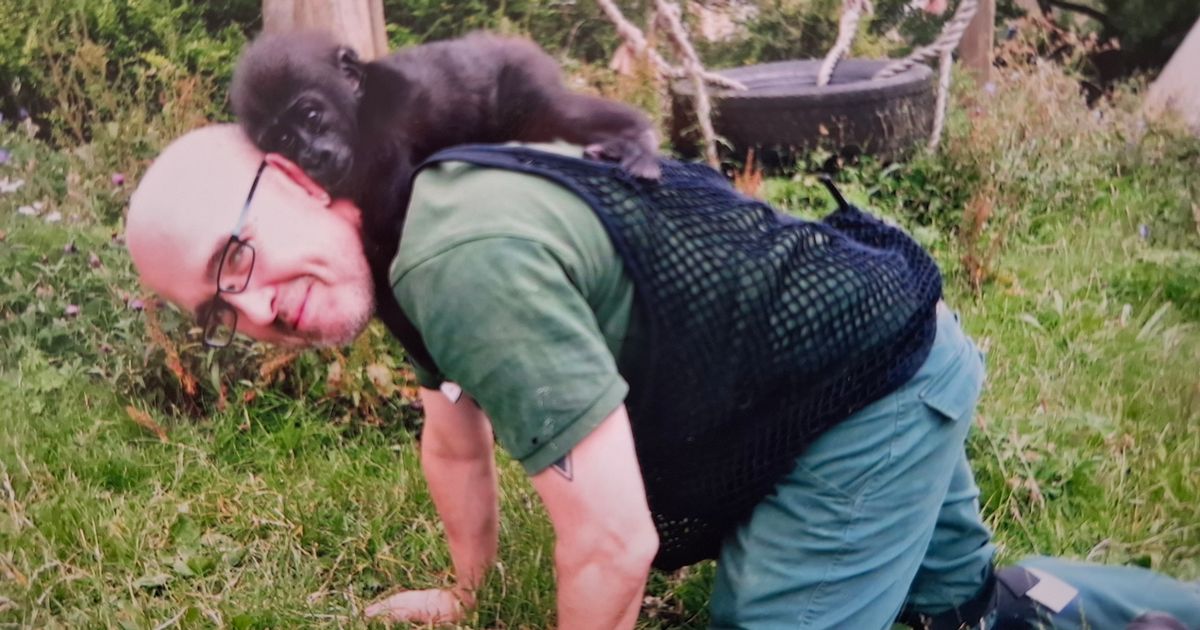Alan Toyne has always had a keen eye for the natural world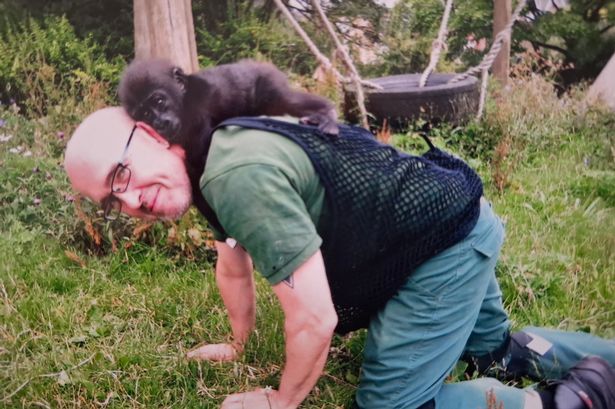 Young Afia hitching a ride—clinging tightly to Alan’s back, mimicking the way infant gorillas would cling to their mothers in the wild.
Young Afia hitching a ride—clinging tightly to Alan’s back, mimicking the way infant gorillas would cling to their mothers in the wild.
It’s not every day you meet someone who has cradled a baby gorilla in a car seat, brought it home after work, and fallen asleep with it curled into their arm on Christmas Day.
But for Alan Toyne, former zookeeper turned author, such moments are not just memories—they are milestones in a life deeply intertwined with some of our closest evolutionary cousins.
Alan’s story, captured in his memoir Gorillas in Our Midst , is more than an account of life behind the scenes at Bristol Zoo—it’s a meditation on human-animal bonds, the ethics of conservation, and what it truly means to care.
Born and raised with a keen eye for the natural world, Alan’s early fascination with primates took root during childhood visits to London Zoo.
“I used to visit once a year when we went to see my Gran during the school summer holidays,” he recalls. “That was the first time I saw a gorilla. I was fascinated by all the primates, the way they moved and interacted with each other.”
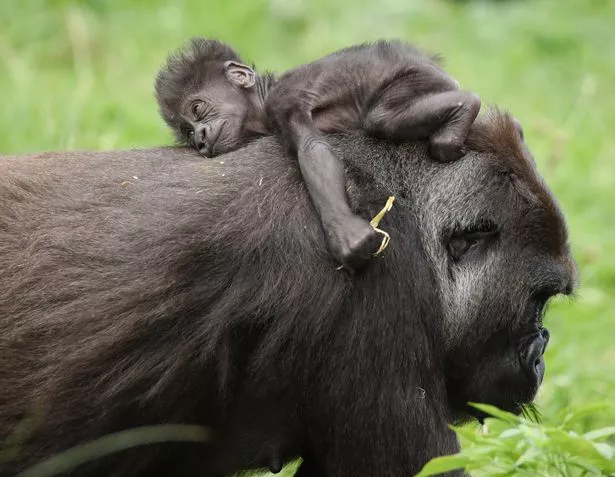 Hasani sprawled across a surrogate’s back—comfortably dozing in the safety of his social group, a sign of successful reintegration and trust.
Hasani sprawled across a surrogate’s back—comfortably dozing in the safety of his social group, a sign of successful reintegration and trust.
Fuelled by programmes like Life on Earth and inspired by figures such as Diane Fossey, young Alan joined the Dodo Club—then part of what’s now the Durrell Wildlife Conservation Trust.
He later formalised his passion for conservation at East London University, studying anthropology with a focus on what he calls “primate politics”.
“I was intrigued by the social hierarchies within different species of primate,” he says. “It mirrored our own so clearly. I looked extensively at chimpanzee, bonobo and baboon societies as a precursor to understanding human social systems.”
That anthropological lens would serve him well in the years to come, especially when he joined Bristol Zoo as a volunteer keeper—a job that quickly turned into a career.
Alan’s career at Bristol Zoo culminated in a deeply personal chapter: hand-rearing two baby gorillas, Afia and Hasani.
Afia’s story began in crisis. Born via emergency caesarean section after her mother Kera developed pre-eclampsia, the tiny gorilla was placed into the care of Alan and his team. The goal? To rear her safely, then reintegrate her into the troop before her first birthday—ensuring she would grow up never knowing she’d lived among humans.
“The method of hand-rearing Afia meant 24/7 hands-on care,” Alan explains. “You couldn’t help becoming emotionally connected.”
And connected he was, bringing Afia home after shifts, cradling her like an infant.
There’s a striking moment Alan recounts in the book—driving Afia home only to see her growing distress during car journeys.
“It was causing her distress and was counterproductive,” he says. “For that final week, we stayed in a hastily renovated basement flat the zoo owned over the road.”
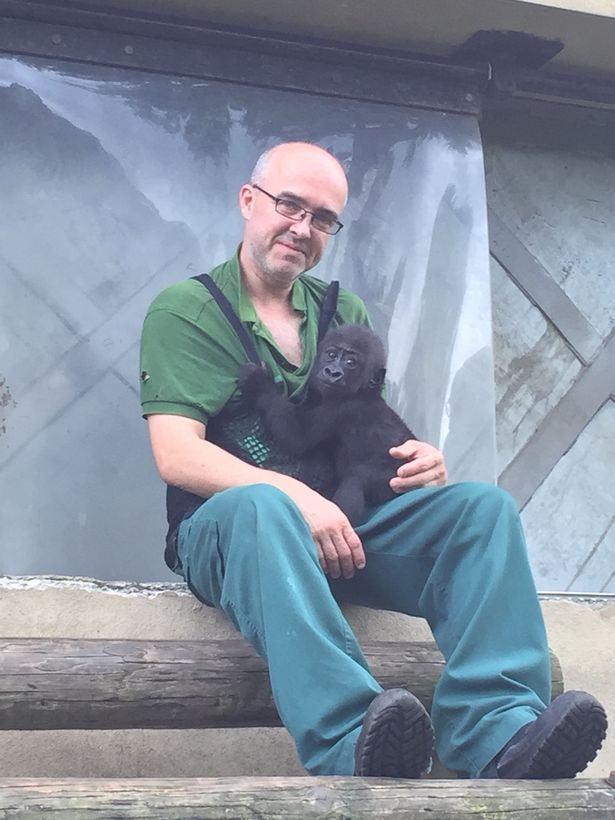 Alan cradles Afia on the zoo steps, a portrait of devotion that speaks volumes about the emotional complexity behind wildlife care.
Alan cradles Afia on the zoo steps, a portrait of devotion that speaks volumes about the emotional complexity behind wildlife care.
A particularly difficult decision came when the team chose not to return Afia to her biological mother. “We’d hoped Kera would find a better standing in the group if she had a baby,” Alan says.
“But she remained incredibly ill after the surgery, and despite our best efforts, no maternal bond formed.”
Instead, Romina, an elder female who had shown interest from the beginning, became Afia’s surrogate mother.
Hand-rearing Hasani during lockdown proved especially challenging. “I was acting as a single parent,” he says. “But knowing we were doing what was in the best interest of the animals helped drive me on.
“The moment I woke up on Christmas Day at the zoo, with Hasani lying in the crook of my arm, laughing in his sleep… that contrast to his first night, when he whimpered and screamed, is something I carry with me.”
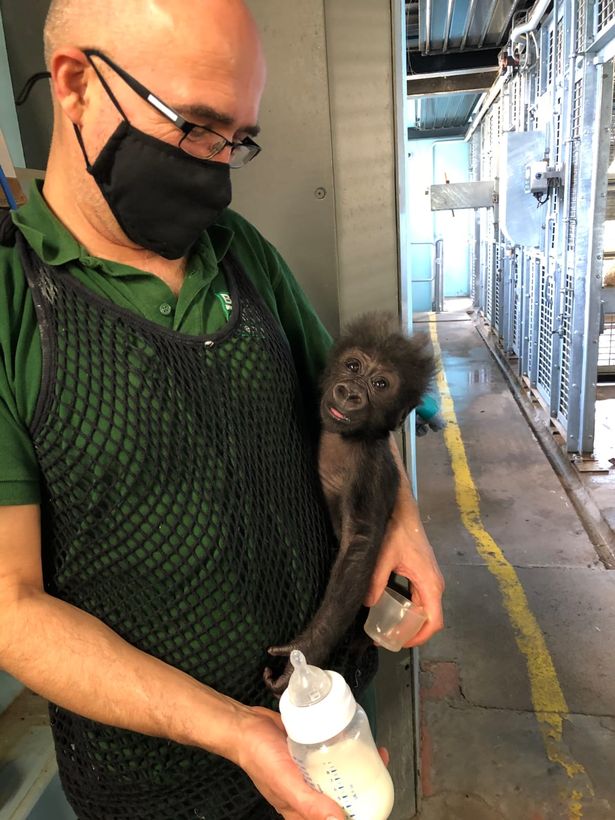 Feeding time on the front lines of care—Alan Toyne holds a bottle and a beaming baby gorilla during a typical day in the nursery corridor at Bristol Zoo.
Feeding time on the front lines of care—Alan Toyne holds a bottle and a beaming baby gorilla during a typical day in the nursery corridor at Bristol Zoo.
For those who question the ethics of zoos, Alan is unapologetically clear. “All four subspecies of gorilla are critically endangered. Zoos work collectively to maintain a genetically diverse captive population—meaning animals are never taken from the wild anymore.
“They [zoos] act as a bastion against the rampant environmental catastrophe the world faces,” he says. “And they’re at the forefront of rallying people to protect what remains of the natural world.”
In Gorillas in Our Midst , the animals emerge not as exhibits, but as individuals—Jock, Sal, Romina—each with distinct personalities. “I wanted to do the gorillas justice,” Alan says. “Not just to show their traits, but to help readers know who was who and follow their stories.”
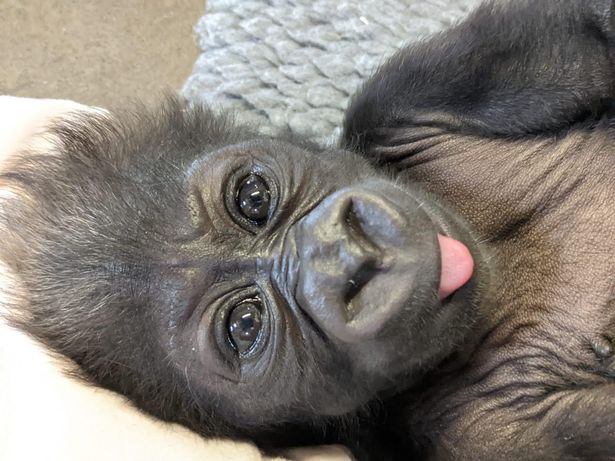 A cheeky close-up of Afia as a baby
A cheeky close-up of Afia as a baby
“I hope readers come away feeling uplifted and with a greater understanding of what zookeepers do,” he says. “And I hope they feel more connected with the Western Lowland Gorillas and want to help ensure their survival.”
The bond between humans and animals, Alan reminds us, isn’t just about nurture—it’s about recognising our shared need for connection. “Gorillas need each other, as do we.”
